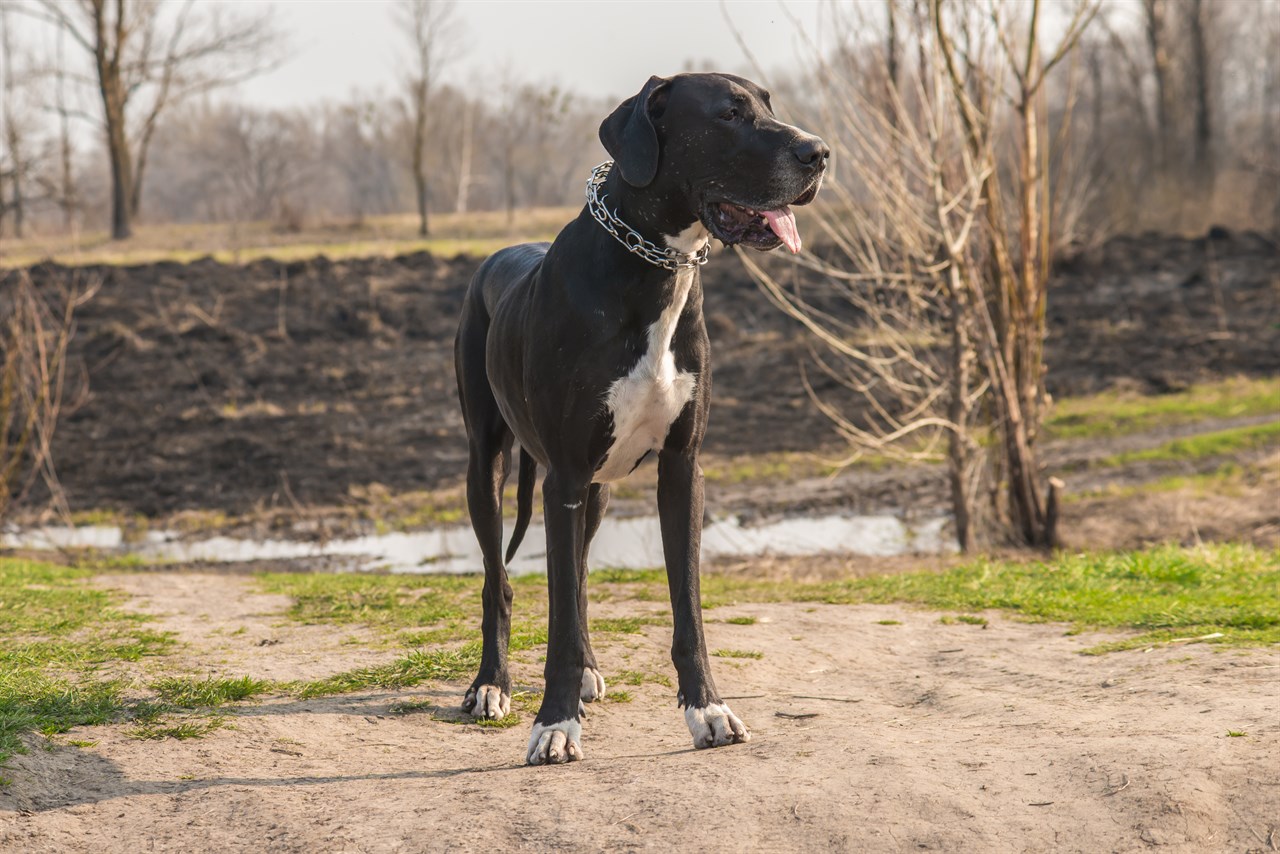Great Dane Exercise Requirements

Despite their giant size, Great Danes are relatively low-energy dogs, known for their calm and gentle demeanour. However, they still require regular exercise to maintain their physical health and mental well-being. Understanding their exercise needs is crucial to ensure they lead happy and healthy lives. Here are some key considerations for exercising a Great Dane.
Age Matters
Great Dane puppies have growing bodies, and their exercise needs differ from those of adults. While playtime is essential for puppies to build coordination and strength, it's essential to avoid overexertion, especially during their rapid growth phases.
Adult Great Danes need regular exercise but are less active than puppies. Tailor their exercise routines to their age and energy level.
Daily Walks
Daily walks are a great way to provide moderate exercise for Great Danes. Aim for at least one or two walks per day, each lasting 30 to 45 minutes.
Leash training is essential, as their size and strength can make them challenging to handle if not well-behaved on a leash.
Off-Leash Play
Great Danes enjoy off-leash play in a secure and fenced area. It allows them to run freely and expend energy in a safe environment.
Dog parks, provided they are safe and well-maintained, can be an excellent place for off-leash socialisation and play.
Mental Stimulation
Mental stimulation is as important as physical exercise for Great Danes. Puzzle toys, treat-dispensing toys, and obedience training sessions can engage their minds and prevent boredom.
Avoid High Impact Activities
Great Danes are prone to orthopaedic issues due to their rapid growth and large size. Avoid high-impact activities, such as jumping or running on hard surfaces, as they can strain their joints and increase the risk of injury.
Swimming
Swimming is an excellent low-impact exercise for Great Danes. It provides cardiovascular benefits without putting stress on their joints. If you have access to a dog-friendly swimming area, consider incorporating it into their exercise routine.
Age and Health Considerations
As Great Danes age, their exercise needs may change. Arthritis and other age-related conditions can affect their mobility. Consult with your veterinarian to adjust their exercise routine accordingly.
Supervision and Socialisation
Supervise your Great Dane during play and exercise to ensure their safety. Socialisation with other dogs is beneficial, but monitor interactions to prevent any aggressive behaviour.
Heat and Cold Considerations
Due to their short coat and lean body, Great Danes are sensitive to extreme temperatures. Avoid strenuous exercise during hot weather, and provide a coat or sweater in cold weather to keep them warm.
Regular exercise helps prevent obesity and maintains muscle tone in Great Danes. However, it's crucial to strike a balance between physical activity and rest, especially during their growth phase. Tailor their exercise routine to their age, individual energy level, and overall health to ensure they remain happy and healthy companions.
Great Dane puppies for sale
- Find Great Dane puppies for sale in ACT
- Find Great Dane puppies for sale in NSW
- Find Great Dane puppies for sale in NT
- Find Great Dane puppies for sale in QLD
- Find Great Dane puppies for sale in SA
- Find Great Dane puppies for sale in TAS
- Find Great Dane puppies for sale in VIC
- Find Great Dane puppies for sale in WA